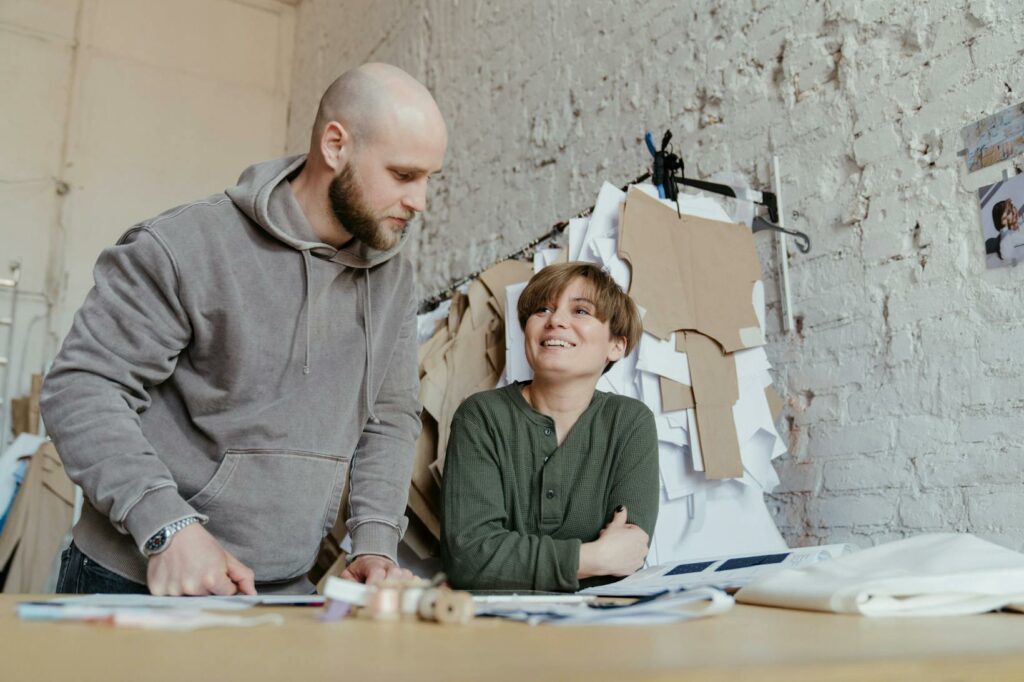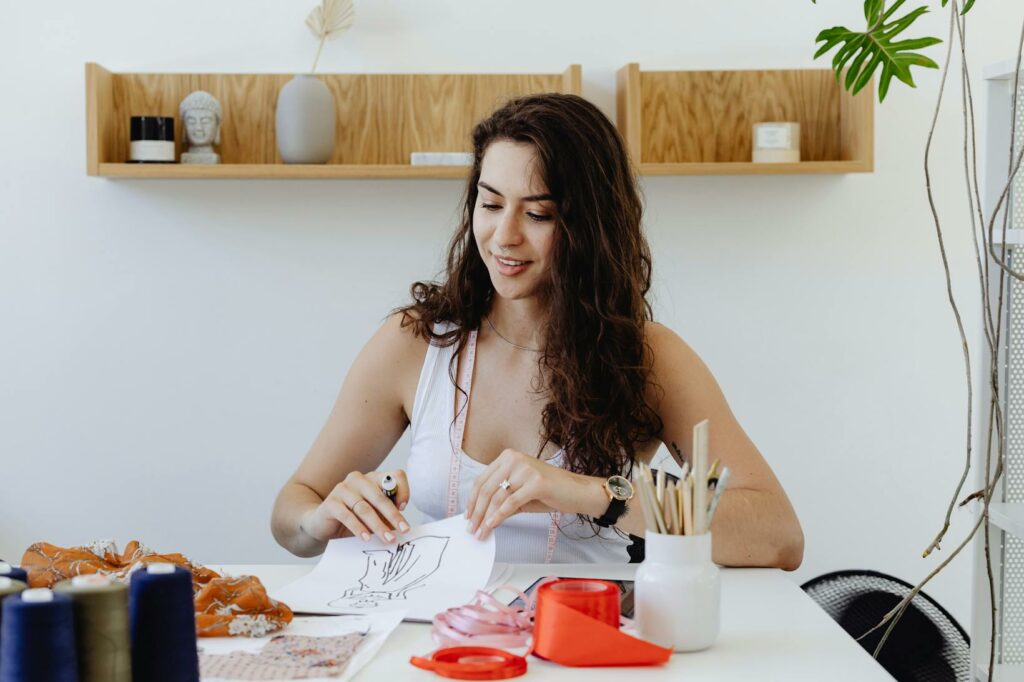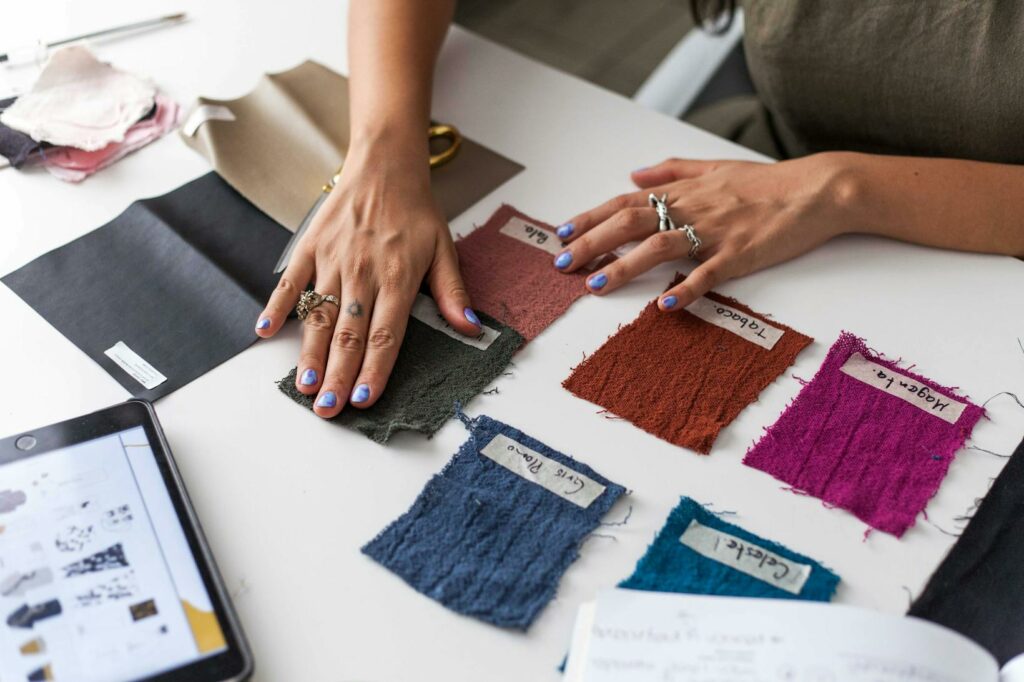Step into the vibrant world of a fashion design studio, where creativity knows no bounds. In these bustling hubs of innovation, designers bring sketches to life, fabric swatches transform into runway-ready garments, and trends are born. It’s a place where imagination meets craftsmanship, and every stitch tells a story.
Fashion Design Studio
The layout of a typical fashion design studio is carefully structured to optimize creativity and productivity. It usually consists of distinct areas designated for different stages of the design process.
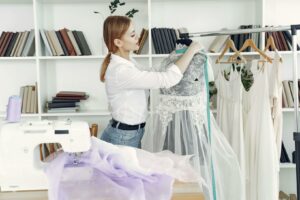 The Layout of a Typical Fashion Design Studio
The Layout of a Typical Fashion Design Studio
- Design Area: This section of the studio serves as the creative hub where designers sketch, conceptualize, and create mood boards for inspiration.
- Pattern Making Space: A designated area for pattern making, where designers translate their sketches into tangible patterns that serve as blueprints for garments.
- Sewing Stations: Equipped with cutting tables, sewing machines, and pressing equipment, these stations are where the actual construction of garments takes place.
- Fitting Rooms: Essential for trying on and adjusting garments to ensure a perfect fit on models or clients.
- Sewing Machines: A variety of sewing machines are essential for different types of stitching, such as straight stitch machines, overlock machines, and coverstitch machines.
- Pattern Drafting Tools: Includes rulers, curves, and cutting mats for creating and adjusting patterns with precision.
- Mannequins: Used for draping fabrics and visualizing how garments will fall on the human body.
- Cutting Tools: Essential tools like scissors, rotary cutters, and cutting mats for precise fabric cutting.
- Steamers and Irons: To ensure garments are properly pressed and finished for a polished look.
- Sketching Materials: Pencils, markers, and sketchbooks for translating design ideas onto paper before moving to digital design software.
- Embroidery Machines: For adding intricate details and embellishments to garments.
- Computer-Aided Design (CAD) Software: Used for creating digital designs and patterns, streamlining the design process.
Having a well-organized layout and access to the right equipment and tools is crucial for fashion designers to bring their creative visions to life efficiently and with precision in a fashion design studio environment.
The Role of Technology in Fashion Design Studios
Technology plays a pivotal role in enhancing the efficiency and creativity of fashion design studios. Here are some key aspects where technology significantly influences the design process:
Software and Apps for Design and Pattern Making
In modern fashion design studios, designers utilize various software and applications to streamline the design and pattern-making processes. These tools not only facilitate the creation of digital sketches but also enable designers to develop intricate patterns with precision. Software like Adobe Illustrator and CorelDRAW are commonly used for creating digital designs, while pattern-making software such as AccuMark and Optitex help in translating these designs into accurate patterns for production.
Integrating Digital Textile Printers
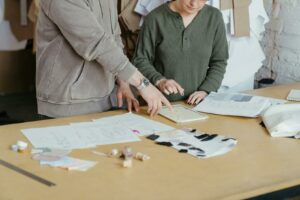 The integration of digital textile printers in fashion design studios revolutionizes the way fabrics are designed and printed. Designers can now easily customize fabrics by directly printing their creations onto various textiles, allowing for unique and personalized designs. Digital textile printers enable quick turnaround times and reduce waste by eliminating the need for traditional printing methods.
The integration of digital textile printers in fashion design studios revolutionizes the way fabrics are designed and printed. Designers can now easily customize fabrics by directly printing their creations onto various textiles, allowing for unique and personalized designs. Digital textile printers enable quick turnaround times and reduce waste by eliminating the need for traditional printing methods.
This technology empowers designers to experiment with different prints, colors, and textures, leading to innovative and sustainable design practices in the fashion industry.
Impact of Fashion Design Studios on Industry Trends
Fashion design studios play a pivotal role in shaping industry trends, both through their innovative designs and occasional setbacks. Here’s how these studios influence the fashion landscape:
Leading Innovations and Setbacks
- Innovations: Fashion design studios are at the forefront of introducing cutting-edge designs, materials, and techniques that push the boundaries of creativity. For example, Studio XYZ recently unveiled a groundbreaking collection featuring sustainable fabrics made from recycled materials, setting a new standard for eco-conscious fashion.
- Setbacks: While studios strive for innovation, setbacks can occur due to various factors such as production delays, design flaws, or market shifts. Studio ABC faced a setback when a key supplier failed to deliver materials on time, causing delays in their highly anticipated fashion line release.
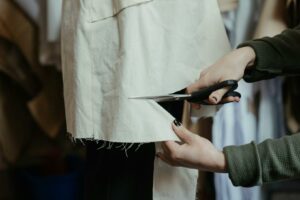
- Impact Story 1: Design Studio DEF partnered with a renowned fashion house to create a capsule collection inspired by cultural heritage. This collaboration not only garnered widespread acclaim but also raised awareness about preserving traditional craftsmanship in modern design.
- Impact Story 2: Through a collaborative project with local artisans, Studio GHI revived age-old textile techniques to develop a unique line of handcrafted garments. This initiative not only supported artisan communities but also brought traditional craftsmanship to the global fashion stage.
Fashion design studios serve as the creative hubs where innovation meets tradition, shaping industry trends and setting new standards. From utilizing cutting-edge technology to fostering collaborations with fashion houses and artisans, these studios play a pivotal role in driving the evolution of modern fashion.

